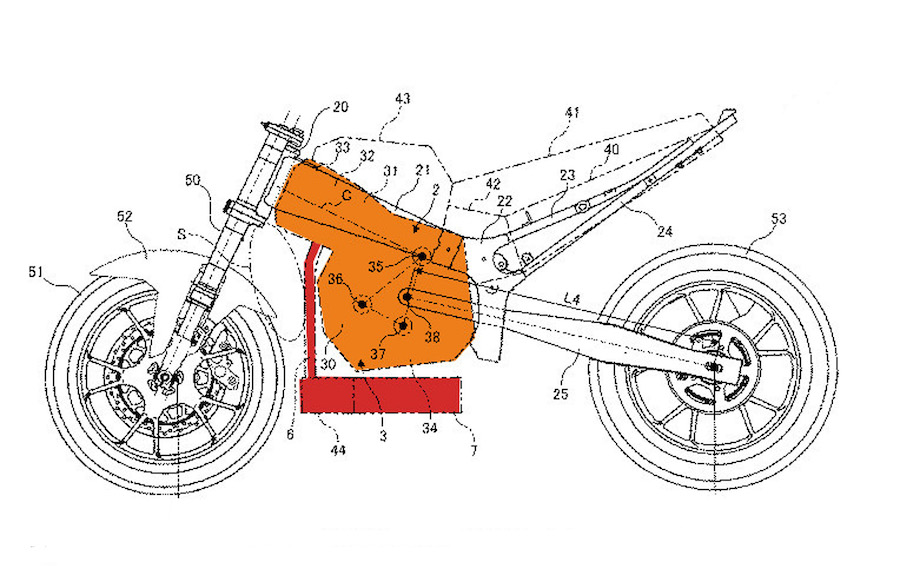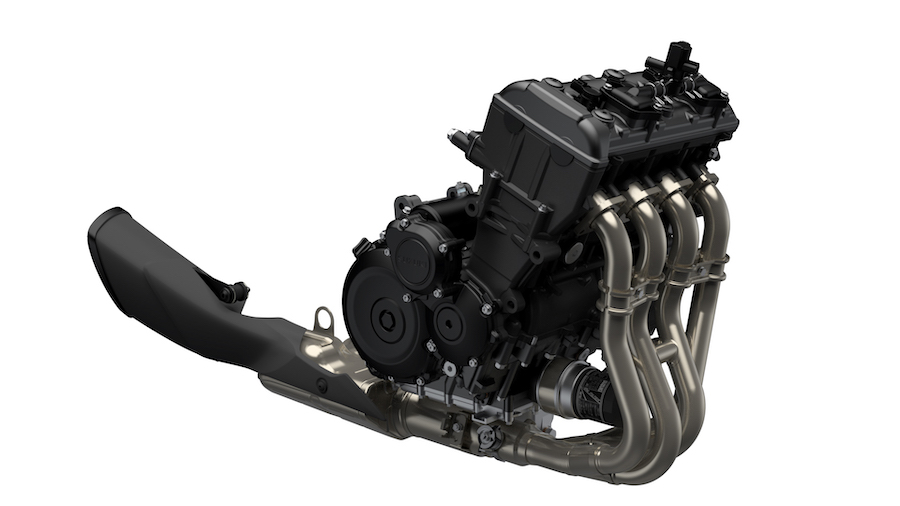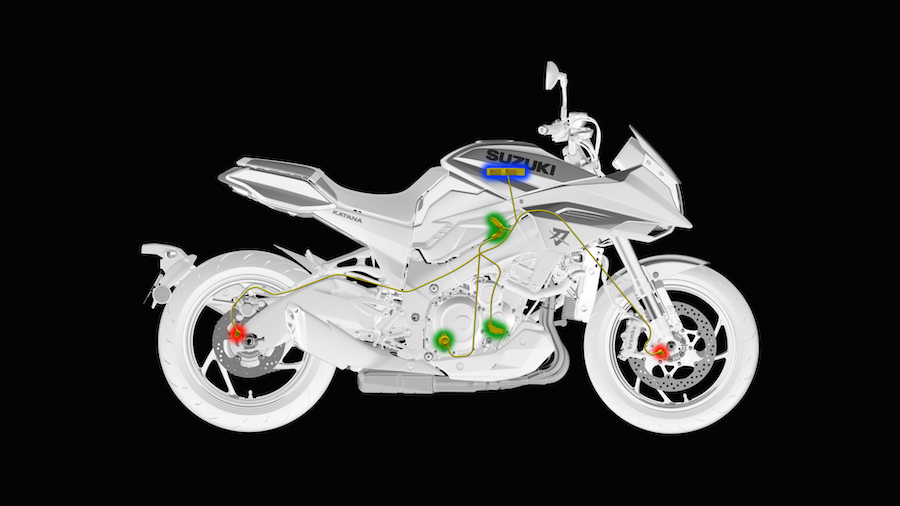While patents are often useful to give a direct clue to upcoming new models, sometimes they’re a bit wider in scope. And this is one of those times. The latest patent application from Suzuki doesn’t show us a particular new bike like we’re often reporting on in our news pages, but instead reveals how the firm is looking at ways to completely rethink the basics of motorcycle design.
One of the major challenges of developing a new bike is packaging; how all the pieces fit together to make it as compact as possible. That’s what this patent sets out to solve, and it achieves it by repositioning the engine entirely.
You want to put it where?!
The engine’s outline is clear to see. The patent explains how it could be an inline multi-cylinder or a single-cylinder engine, but the key change is that the whole engine and transmission unit is flipped over. So instead of having the cylinders mounted near-vertically at the front, with the crankshaft at the bottom and the transmission behind it, the cylinders run almost horizontally, just below the ‘tank’ – which is, in fact, just the airbox in this design. The crankshaft is towards the rear, the cylinder head at the front, and the gearbox hangs underneath.
By reversing the cylinder head compared to a normal engine, the exhausts still exit in front of the unit, going straight down into an exhaust collector and catalytic converter underneath, where there’s now more space than on a conventional bike we’ve been used to. And with emission rules and targets going in the way of tighter and tighter rules, it may very well have been the catalyst which launched this very concept.
The shape of the engine and transmission unit means there’s an empty space just behind and above the front wheel – exactly where it’s needed when the suspension compresses and the wheel moves backwards and upwards. That means the front wheel can be mounted further back than normal, therefore shortening the wheelbase.

The holy grail
A second benefit is that the repositioned transmission shafts mean that the swingarm pivot can be moved much further forwards than on a conventional bike. That gives scope for a longer swingarm while keeping the chain tension constant, improving the bike’s stability and making for more consistent rear suspension geometry. A shorter wheelbase and a longer swingarm has long been something of a holy grail in sportsbike design, and this idea delivers on both fronts.
To allow for the repositioned engine, other parts have to move as well. The fuel tank – marked ‘40’ in this drawing – is shifted to an under-seat position, while the airbox (43) replaces it above the engine. Although the patent text suggests a water-cooled engine, there’s no suggestion as to where the radiator should be positioned; there’s clearly no space in its normal spot ahead of the engine, and the under-seat space is filled with a fuel tank. A side-mounted radiator could be the solution.
With the full width of the crankshaft and cylinders between the frame rails, the idea probably suits single-cylinder or parallel twin engine more than four-cylinder units. The frame will have to be wider both at the front, near the headstock, and at the back below the rider’s seat, to accommodate the engine. The centre of gravity is also likely to be higher than normal, although that’s not necessarily a bad thing on a sportsbike, as a higher centre of gravity means you have to lean less in corners.

When might we see it?
At the moment, this is clearly little more than an outline idea, so don’t expect Suzuki to launch a bike in the near future using this unconventional but rather clever new layout. But it will be interesting to see if the firm pursues the concept any further with additional patents in months to come. If they do, we’ll know. So watch this space.












